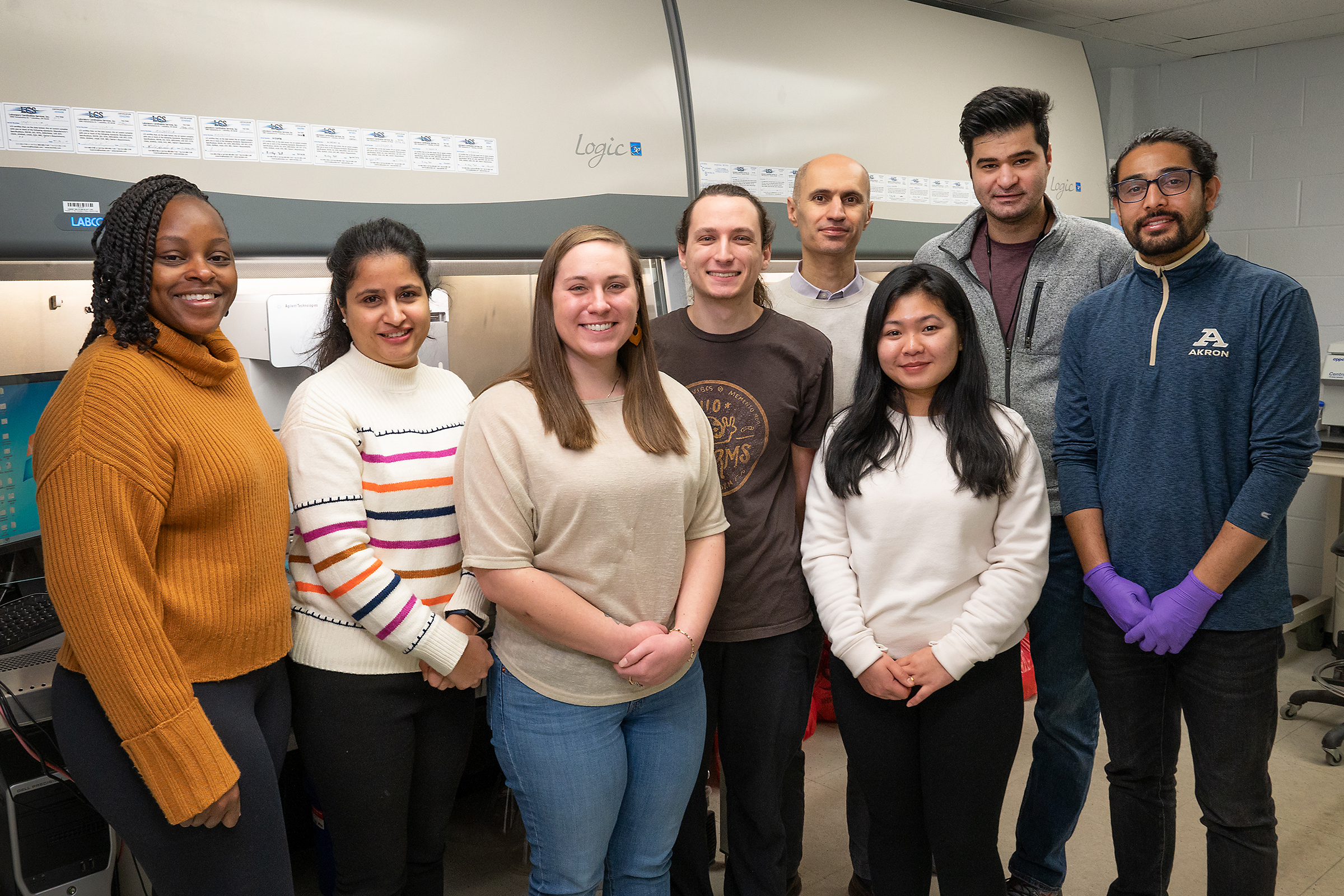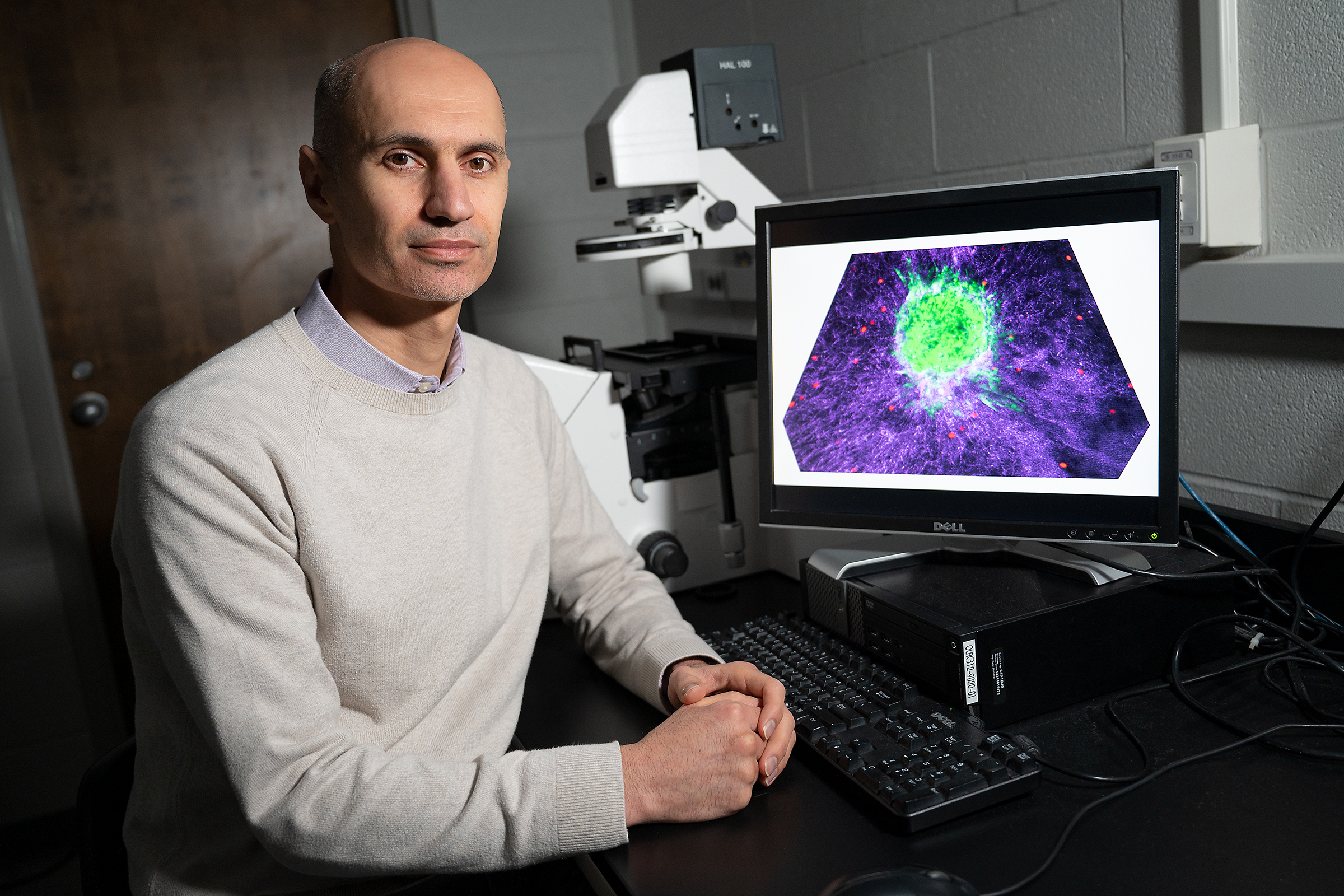Contributions to cancer research
At The University of Akron (UA), a top public urban research institution, Dr. Hossein Tavana, professor and chair of the Department of Biomedical Engineering, is collaborating with a research team at the University of Michigan to understand how breast cancer cells that metastasize to bone survive for many years before being “triggered” to grow, and what fuels their growth to form metastatic tumors. The results could provide greater insight into how to prevent the lethal recurrence of the disease, thus lowering the mortality from breast cancer. The research is being funded by a $2.3 million grant from the U.S. Department of Defense that was awarded in summer 2022.
The contributions to cancer research that Tavana and his Tissue Engineering Microtechnologies research group make is to create tissue engineered models of breast tumors to help understand disease mechanisms, improve drug testing, and discover more effective anticancer drugs.
This time, for a project that only began a few months ago, they’re trying to understand the specific mechanisms that keep breast cancer cells dormant in bone and what helps them grow. It could be a process similar to stem cells, where stem cells remain dormant and start growing when they receive a signal that they’re needed to work in the body and regenerate or repair a tissue.

From left to right, the Tavana Research Group members: Davonn Henderson, Astha Lamichhane, Hannah Combs, Jacob Heiss, Hossein Tavana, Anju Rana Magar, Pouria Rafsanjani Nejad, and Prasiddha Guragain.
Transforming clinical care
A common type of breast cancer is called hormonal receptor-positive breast cancer. The receptors on the cancer cells "catch" estrogen to help them grow and develop tumors. "In this subtype of breast cancer, the cells typically metastasize to bone, and there are effective therapies designed and available to this subtype of patients," said Tavana. "Often, there’s no sign of disease for many years. But then, at some point, in later stages of life, patients come back with tumors in their bones."
These cells metastasize early in the disease process and enter the bone marrow and stay there dormant for years until something activates them to begin growing. Current hormone therapies for patients with estrogen receptor-positive breast cancer cannot prevent the breast cancer cells from growing in bone and turning fatal.
"About 75% of all breast cancers are identified as hormone receptor-positive, meaning that cancer cells overproduce a receptor to increase the intake of a hormone and fuel their growth," said Tavana. "We think that the impact on metastasized bone marrow breast cancer is huge because if you can come up with mechanisms that are targetable by therapeutics, then you can increase the life span of the patient.
"Through our research, we expect to identify novel treatment strategies to eliminate estrogen receptor-positive breast cancer cells from bone. These mechanisms will point to new therapy opportunities to eventually transform clinical care by eliminating cancer cells from bone and preventing recurrent, metastatic disease."
Tissue Engineering Microtechnologies
In addition to studying cancer, Tavana’s research interests also include biofluid mechanics of lungs and tissue engineering from stem cells. He manages the Tissue Engineering Microtechnologies lab in UA’s College of Engineering and Polymer Science. There, Tavana and his students develop novel tissue engineered models, such as human tumor models to study cancer drug resistance, generate neural cells from stem cells for cell replacement therapies of neurodegenerative disorders, and develop lung airway models to study therapeutics delivery to lungs. Projects in the lab have been funded by the National Institutes of Health, the National Science Foundation, and Department of Defense.
As one of the leading causes of mortality around the world, cancer occurrences will increase as the human population grows, but through investment and research, more and more effective treatments become available. “As a scientist I like challenging questions that are difficult to tackle,” said Tavana. “The challenging nature of cancer research provides a great opportunity for scientific studies that will hopefully lead to curing patients.”
Story by Alex Knisely.
Media contact: Cristine Boyd, 330-972-6476 or cboyd@uakron.edu.


